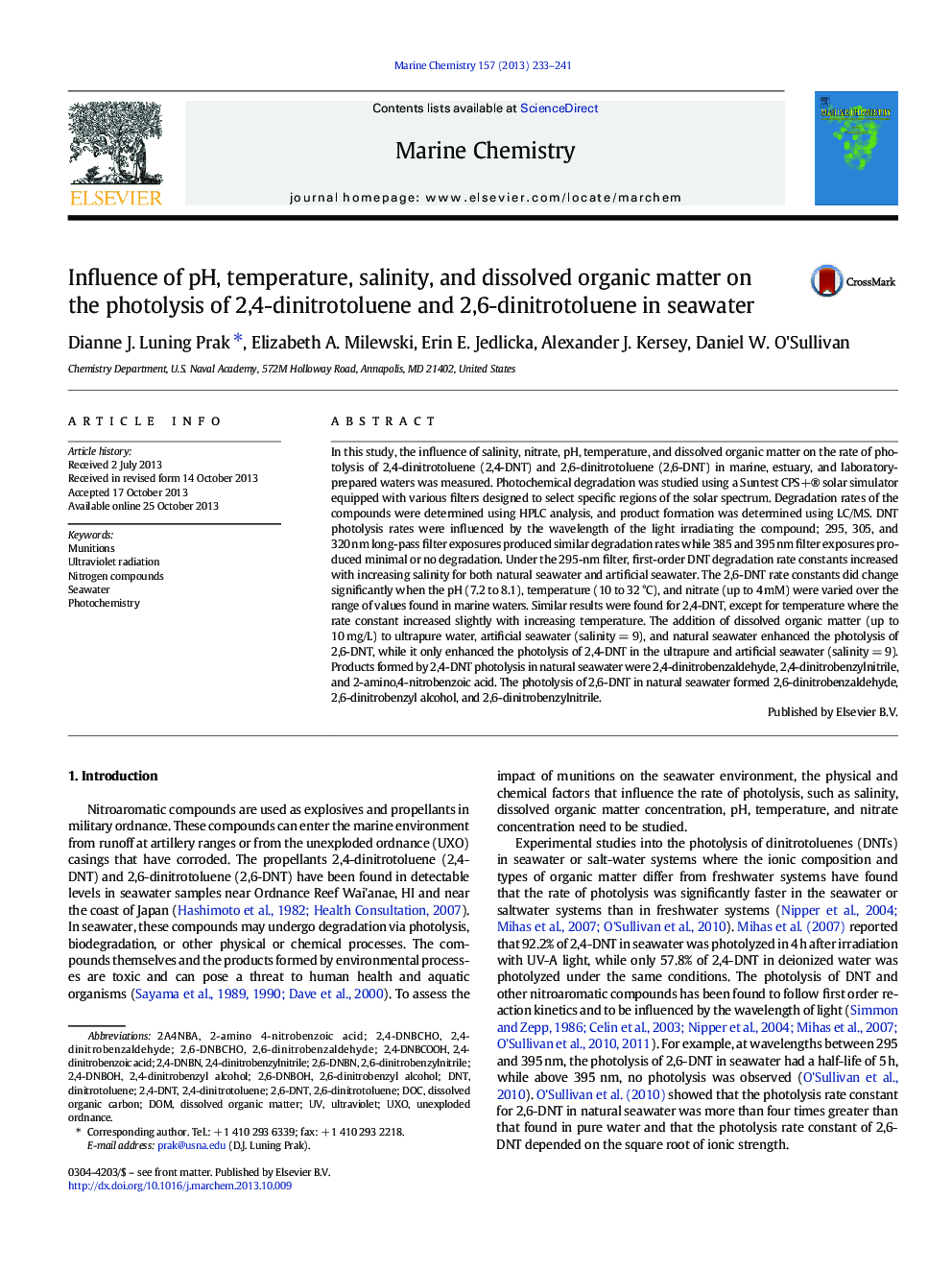| کد مقاله | کد نشریه | سال انتشار | مقاله انگلیسی | نسخه تمام متن |
|---|---|---|---|---|
| 1263012 | 1496678 | 2013 | 9 صفحه PDF | دانلود رایگان |

• 2,6-Dinitrotoluene & 2,4-dinitrotoluene were photolyzed in marine and laboratory waters.
• DNT photolysis rates increased with increasing salinity & dissolved organic matter.
• Temperature, nitrate, and pH had minimal impact on DNT photolysis in marine waters.
• In seawater, 2,6-DNT photolysis produced the 2,6-dinitrobenzyl alcohol, 2,6-dinitrobenzaldehyde, and 2,6-dinitrobenzylnitrile.
• 2,4-DNT photolysis produced 2,4-dinitrobenzaldehyde, 2,4-dinitrobenzylnitrile & 2-amino,4-nitrobenzoic acid.
In this study, the influence of salinity, nitrate, pH, temperature, and dissolved organic matter on the rate of photolysis of 2,4-dinitrotoluene (2,4-DNT) and 2,6-dinitrotoluene (2,6-DNT) in marine, estuary, and laboratory-prepared waters was measured. Photochemical degradation was studied using a Suntest CPS+® solar simulator equipped with various filters designed to select specific regions of the solar spectrum. Degradation rates of the compounds were determined using HPLC analysis, and product formation was determined using LC/MS. DNT photolysis rates were influenced by the wavelength of the light irradiating the compound; 295, 305, and 320 nm long-pass filter exposures produced similar degradation rates while 385 and 395 nm filter exposures produced minimal or no degradation. Under the 295-nm filter, first-order DNT degradation rate constants increased with increasing salinity for both natural seawater and artificial seawater. The 2,6-DNT rate constants did change significantly when the pH (7.2 to 8.1), temperature (10 to 32 °C), and nitrate (up to 4 mM) were varied over the range of values found in marine waters. Similar results were found for 2,4-DNT, except for temperature where the rate constant increased slightly with increasing temperature. The addition of dissolved organic matter (up to 10 mg/L) to ultrapure water, artificial seawater (salinity = 9), and natural seawater enhanced the photolysis of 2,6-DNT, while it only enhanced the photolysis of 2,4-DNT in the ultrapure and artificial seawater (salinity = 9). Products formed by 2,4-DNT photolysis in natural seawater were 2,4-dinitrobenzaldehyde, 2,4-dinitrobenzylnitrile, and 2-amino,4-nitrobenzoic acid. The photolysis of 2,6-DNT in natural seawater formed 2,6-dinitrobenzaldehyde, 2,6-dinitrobenzyl alcohol, and 2,6-dinitrobenzylnitrile.
Figure optionsDownload as PowerPoint slide
Journal: Marine Chemistry - Volume 157, 20 December 2013, Pages 233–241